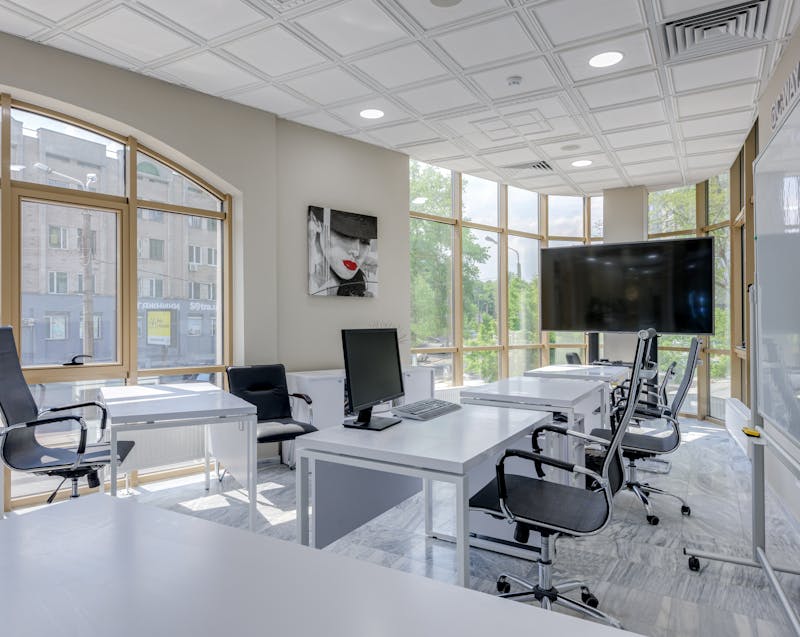- Employee wellness is crucial for productivity, engagement, and retention; healthy offices foster healthier employees.
- Improving office design enhances productivity and health, reducing work-related injuries and improving morale.
- Emphasize ergonomic furniture, natural lighting, good ventilation, and noise reduction in office design.
- Regular cleaning routines, pest control, and a clean-up policy minimize illnesses and boost productivity.
- Encourage healthy habits like hydration, nutritious meals, and wellness programs for overall employee well-being.
The daily grind of office life can take a toll on an employee’s physical and mental well-being. Intense workloads, tight deadlines, and lengthy commutes can leave employees exhausted, stressed, and out of shape.
Besides offering wellness programs and initiatives, the office environment can play a crucial role in increasing employee productivity, engagement, and satisfaction. Healthy employees are happy employees and are more likely to stay engaged in their work and enjoy higher levels of productivity.
Office environments have a significant impact on an employee’s health. Untidy, overcrowded, and poorly lit offices can be a source of physical and mental stress. Meanwhile, a well-designed office that is clean, well-ventilated, and provides optimal working conditions can foster a productive and healthy workforce.
Effective office design can positively impact employee productivity and energy levels, reduce work-related injuries and illnesses, and promote happiness and well-being in the workplace.
This post will explore the importance of office design in promoting employee health and productivity.
Designing for Health and Wellness
Designing offices that promote health and wellness can positively impact employees’ emotional and physical well-being. There are several aspects to consider when designing an office for employee wellness.
Ergonomic Furniture and Equipment
Providing comfortable chairs and desks that align with an individual’s physical needs can prevent long-term health issues such as back pains, eye strain, and repetitive injuries.
Natural Lighting and Indoor Plants
Natural light promotes happiness, and indoor plants help boost air quality, reduce air pollutants, provide fresh oxygen, and increase well-being.
Proper Ventilation and Air Quality Control
Good ventilation is vital in workspace design to improve air quality because an inadequate air supply can cause headaches, fatigue, and other illnesses.
Noise Reduction and Acoustic Considerations
Noise reduction can help to create a more serene and focused atmosphere, enabling employees to concentrate better and communicate efficiently.
The Connection Between Cleanliness and Wellness
An unclean working environment can interfere with employee productivity, morale, and health. A poorly maintained office harbors harmful allergens, pollutants, and pathogens, leading to illness, absenteeism, and low productivity.
Cleanliness in the Workplace
A prioritized workplace clean-up policy is necessary to prevent the spread of germs and infections, minimizing absenteeism.
Preventing the Spread of Germs and Illnesses
Encourage hand hygiene, clean kitchen spaces, and regularly clean communal spaces such as restrooms, gyms, and smoking areas.
Regular Cleaning Routines and Sanitation Measures
Develop and execute a cleaning protocol that involves deep cleaning carpets, curtains, and frequently-touched surfaces like door handles, telephones, and keyboards.
Pest Control for a Healthy Workspace
Insects and rodents can be a nuisance in the workplace, creating health risks that can impact employee productivity and absenteeism.
Effective pest control and management can help eliminate pests from office spaces like cockroaches, rodents, and bedbugs, improving employee health and productivity, which can cause allergies, asthma, and spreading bacteria and disease-causing pathogens.

Encouraging Healthy Habits
Promoting healthy habits among employees begins by creating an environment that inspires and facilitates well-being.
Providing Access to Clean Drinking Water
The cornerstone of well-being is hydration, and this principle should extend seamlessly into the workplace. Easy access to clean, filtered drinking water is fundamental to keeping employees hydrated throughout the day.
Strategically placed water stations or hydration hubs encourage employees to quench their thirst regularly, promoting mental alertness and sustained productivity.
Offering Healthy Snacks and Meal Options
Nourishing the body with balanced nutrition is pivotal for sustaining energy levels and enhancing cognitive function. Forward-thinking workplaces provide employees with access to healthy snacks and meal options catering to various dietary preferences and restrictions.
On-site cafeterias or well-stocked kitchenettes can feature a variety of nutrient-rich choices, ensuring that employees can refuel with wholesome foods that optimize their performance and overall health.
Promoting Wellness Programs and Initiatives
Promote periodic wellness programs, such as meditation, seminars focusing on stress control, and nutrient education, and encourage the adoption of healthy lifestyle trends through salary incentives.

Employee wellness is vital in any organization. Designing, cleaning, and maintaining healthy office spaces, providing healthy food and drinks, promoting healthy habits, and offering wellness programs and incentives that encourage a healthy lifestyle can break the monotony of work and create an enjoyable and healthy environment.
A single investment in the welfare of employees not only allows for a significant improvement in overall well-being but increases work productivity and output. A healthy workplace encourages a thriving workforce.





